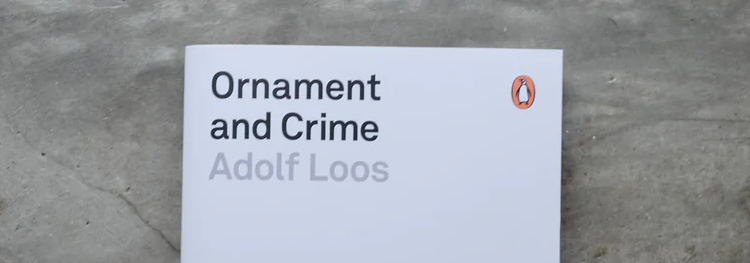
Ornament and Crime (Ornament und Verbrechen), first delivered as a lecture in Vienna and later published as an essay, is one of the most famous polemics in the history of architecture and design. Architect Adolf Loos abhorred the decorative ornamentation of Art Nouveau and the Vienna Secession, as he proclaimed in Ornament and Crime’s succinct central thesis: “the evolution of culture comes to the same thing as the removal of ornament from functional objects.”
Linking ‘primitive’ ornamentation to evolution is the most problematic aspect of Ornament and Crime, as Loos equated the tribal tattoos of Papua New Guinea with “degeneracy”. The essay is stridently moralistic, though it’s also arguably one of the first modernist manifestos, anticipating the functionalist architecture of Le Corbusier. Ornament and Crime: Thoughts on Design and Materials features two dozen essays by Loos, newly translated by Shaun Whiteside.
The Grammar Of Ornament, by Owen Jones, was the first systematic analysis of ornamental art, influencing Auguste Racinet’s L’ornement polychrome (‘polychromatic ornament’) and many other compendiums. Stuart Durant’s Ornament is a comprehensive history of pattern design and ornament since the Industrial Revolution. The more recent Histories of Ornament, edited by Gülru Necipoğlu and Alina Payne, is the first attempt at a global history of the subject.
Linking ‘primitive’ ornamentation to evolution is the most problematic aspect of Ornament and Crime, as Loos equated the tribal tattoos of Papua New Guinea with “degeneracy”. The essay is stridently moralistic, though it’s also arguably one of the first modernist manifestos, anticipating the functionalist architecture of Le Corbusier. Ornament and Crime: Thoughts on Design and Materials features two dozen essays by Loos, newly translated by Shaun Whiteside.
The Grammar Of Ornament, by Owen Jones, was the first systematic analysis of ornamental art, influencing Auguste Racinet’s L’ornement polychrome (‘polychromatic ornament’) and many other compendiums. Stuart Durant’s Ornament is a comprehensive history of pattern design and ornament since the Industrial Revolution. The more recent Histories of Ornament, edited by Gülru Necipoğlu and Alina Payne, is the first attempt at a global history of the subject.


